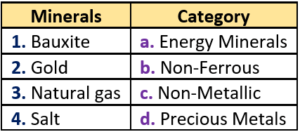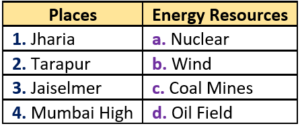What is Case Study Question / Paragraph Based Question?
A case study is a scenario in a particular academic / professional context which students are expected to analyse and respond to, guided by specific questions posed concerning the situation. In many cases, the scenario or case study involves a number of issues or problems that must be dealt with in a academic / professional workplace.
Why Case Study Questions are included in academics?
Case study assignments usually require students to identify problems and issues in a scenario, to demonstrate their developing knowledge of theories and academic / professional policies and to make decisions and recommendations based on these to either prevent or solve some of the issues in that scenario.
How to solve Case Study Questions?
There are several steps to writing an answer to a case study assignment:
STEP 1: Read the case study and questions carefully.
- Read the case and associated questions carefully.
- Highlight the main points of the case and any issues that you can identify.
- Read the questions closely and analyse what they are requiring you to do.
- Read the case again, linking the information that is relevant to each question you have been asked.
STEP 2: Identify the issues in the case study.
Case studies describe a situation which may arise in a particular profession or social context. They often involve a number of people in a complex situation. They will often describe a situation which is problematic, possibly in how it is dealt with, or in its complexity. An important part of your answer is to analyse the situation and to identify the issues/actions described in the case which may be problematic. The following questions may help you to do this:
- What actions were taken in the case?
- Were these actions the most appropriate and why?
- Were there any consequences of the actions taken?
- Was anything omitted or not considered?
- Were actions/procedures in line with existing codes of practice, policy or theories?
STEP 3: Link theory to practice.
Use your knowledge of existing codes of practice, theories and/or other academic / professional documents and behaviours to decide what was done appropriately and what was not.
STEP 4: Plan your answer.
It can be useful to use the questions you have been set as headings and to answer each part in turn, reducing the chance of omitting set questions. You can always take out the headings before you submit if you wish. Lecturers usually set questions in a logical order, so answer in the order they are written in your question.
STEP 5: Start writing your case study answer (for theory only)
Like any assignment, you will need an introduction, body sections in which you answer the questions put to you regarding the case study, and a conclusion.
STEP 6: Edit and proofread.
Read through your paper yourself to detect and correct other errors and omissions.
Check you have answered all questions and backed up your answer with relevant passage.
Types of Case Study Questions / Paragraph Based Questions
Case Study Questions / Paragraph Based Questions can be broadly classified into two types:
- MCQs type: In this type, student has to tick the correct option from various options.
- Theory type: In this type, student has to write proper solution / answer in cotext to the case study.
Case Study/ Passage Based Questions Chapter 5 Minerals and Energy Resources
Type 1: MCQ type
Case Study Question 01
Read the extract given below and answer the questions that follow:
India is fortunate to have fairly rich and varied mineral resources. However, these are unevenly distributed. Broadly speaking, peninsular rocks contain most of the reserves of coal, metallic minerals, mica and many other non-metallic minerals. Sedimentary rocks on the western and eastern flanks of the peninsula, in Gujarat and Assam, have most of the petroleum deposits. Rajasthan with the rock systems of the peninsula, has reserves of many non-ferrous minerals. The vast alluvial plains of North India are almost devoid of economic minerals. These variations exist largely because of the differences in the geological structure, processes and time involved in the formation of minerals.
Question.1. The abundance of mica in _______ and crude oil in ________ shows geological diversity of India.
(a) eastern flanks of the peninsula, Rajasthan
(b) Rajasthan, Assam
(c) Sedimentary rocks, North India
(d) Gujarat, Eastern flanks of the peninsula
Question.2. India is fortunate to have fairly rich and varied mineral resources.
Identify which category these minerals belong to :
Choose the correct option :
(a) 1-b, 2-d, 3-a, 4-c
(b) 1-c, 2-d, 3-a, 4-b
(c) 1-c, 2-a, 3-b, 4-d
(d) 1-b, 2-a, 3-c, 4-d
Question.3. Which of the following is a reason that northern part of India lacks mineral reserves?
(a) Northern plains are old landforms.
(b) Northern plains have dense network of rivers.
(c) Northern plains were formed by alluvial deposits.
(d) Northern plains are fit for agriculture.
Question.4. _________ justify the variations in availability of minerals in India.
(a) Land formation process
(b) Geological structure
(c) Time taken by the natural process
(d) All of the above
Ans.1. (b) Rajasthan, Assam
Ans.2. (a) 1-b, 2-d, 3-a, 4-c
Ans.3. (c) Northern plains were formed by alluvial deposits.
Ans.4. (d) All of the above
Case Study Question 02
Read the extract given below and answer the questions that follow:
Energy is required for all activities. It is needed to cook, to provide light and heat, to propel vehicles and to drive machinery in industries. Energy can be generated from fuel minerals like coal, petroleum, natural gas, uranium, etc.
Energy resources can be classified as conventional and non-conventional sources.
Conventional sources include : firewood, cattle dung cake, coal, petroleum, natural gas and electricity (both hydel and thermal).
Non-conventional sources include solar, wind, tidal, geothermal, biogas and atomic energy. Firewood and cattle dung cake are most common in rural India.
According to one estimate more than 70 per cent energy requirement in rural households is met by these two; continuation of these is increasingly becoming difficult due to decreasing forest area. Moreover, using dung cake too is being discouraged because it consumes most valuable manure which could be used in agriculture.
Question.1. Energy resources are mainly divided into _______ and ________categories.
(a) metallic, non-metallic
(b) ferrous, non-ferrous
(c) conventional, non-conventional
(d) lodes, veins
Question.2. Identify which energy resource the following places are associated with—
Choose the correct option:
(a) 1-a, 2-c, 3-b, 4-d
(b) 1-c, 2-a, 3-b, 4-d
(c) 1-b, 2-c, 3-d, 4-a
(d) 1-d, 2-c, 3-a, 4-b
Question.3. Which of the following option does not stand true for firewood and cattle dung?
(a) Both are conventional source of energy.
(b) Highly popular among rural households.
(c) High value as a raw material.
(d) Can be used as manure in fields.
Question.4. In order to reduce the consumption of conventional sources of energy, government should __________.
(a) bring more alternatives
(b) strictly make laws
(c) make conventional sources costlier
(d) ban use of conventional sources
Ans.1. (c) conventional, non-conventional
Ans.2. (b) 1-c, 2-a, 3-b, 4-d
Ans.3. (c) High value as a raw material
Ans.4. (a) bring more alternatives
Type 2: Theory Type
Case Study Question 03
Read the sources given below and answer the questions that follows :
Source A-Tidal Energy
Oceanic tides can be used to generate electricity. Floodgate dams are built across inlets. During high tide water flows into the inlet and gets trapped when the gate is closed. After the tide falls outside the flood gate, the water retained by the floodgate flows back to the sea via a pipe that carries it through a power-generating turbine.
Source B- Biogas
Shrubs, farm waste, animal and human waste are used to produce biogas for domestic consumption in rural areas. Decomposition of organic matter yields gas, which has higher thermal efficiency in comparison to kerosene, dung cake and charcoal. Biogas plants are set up at municipal, cooperative and individual levels. The plants using cattle dung are known as ‘Gobar gas plants’ in rural India.
Source C- Nuclear or Atomic Energy
Nuclear or Atomic Energy is obtained by altering the structure of atoms. When such an alteration is made, much energy is released in the form of heat and this is used to generate electric power. Uranium and Thorium, which are available in Jharkhand and the Aravalli ranges of Rajasthan are used for generating atomic or nuclear power. The Monazite sands of Kerala is also rich in Thorium.
Source A-Tidal Energy
Question.1. What will generate by the oceanic tides?
Source B- Biogas
Question.2. What do Gobar Gas plants operates on?
Source C- Nuclear or Atomic Energy
Question.3. How atomic energy is obtained?
Ans.1. Oceanic tides can be used to generate electricity, by building floodgate across inlets.
Ans.2. The plants using cattle dung are known as ‘Gobar gas plants’ in rural India. Organic input such as shrubs, farm waste, animal and human waste are used for anaerobic digestion.
Ans.3. Nuclear or Atomic Energy is obtained by altering the structure of atoms.
Case Study Question 04
Read the extract and answer the questions that follows :
Electricity has such a wide range of applications in today’s world that, it’s per capita consumption is considered as an index of development.
Electricity is generated mainly in two ways : by running water which drives hydro turbines to generate hydroelectricity; and by burning other fuels such as coal, petroleum and natural gas to drive turbines to produce thermal power. Once generated the electricity is exactly the same. Hydro electricity is generated by fast flowing water, which is a renewable resource. India has a number of multi-purpose projects like the Bhakra Nangal, Damodar Valley Corporation, the Kopili Hydel Project etc. producing hydroelectric power. Thermal electricity is generated by using coal, petroleum and natural gas. The thermal power stations use nonrenewable fossil fuels for generating electricity.
Question.1. How does thermal power stations generate electricity?
Question.2. Why is hydroelectric called a renewable resource?
Question.3. What are the two ways to generate electricity?
Question.4. What is considered as an index of development?
Ans.1. Thermal power stations use non-renewable fossil fuels such as coal, petroleum and natural gas for generating electricity.
Ans.2. Hydroelectricity is generated by fast flowing water and this water can be regenerated or replenished again and again that why it is called is renewable resource.
Ans.3. Electricity is generated mainly in two ways :
(i) By running water which drives hydro turbines to generate hydroelectricity.
(ii) By burning other fuels such as coal, petroleum and natural gas to drive turbines to produce thermal power.
Ans.4. Per capita consumption of electricity is considered as an index of
development.






